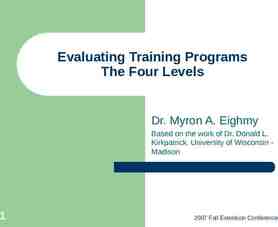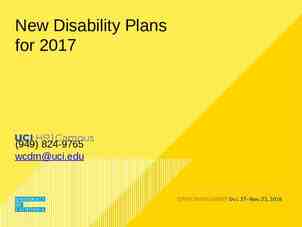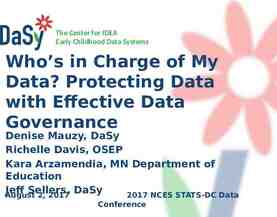PALS Placement Assignment – Live Skills Sept 2021
43 Slides194.33 KB

PALS Placement Assignment – Live Skills Sept 2021

Outline what the ‘PALS’ is Outline your responsibilities within the processes for the PALS Session Structure Questions – write on a post-it note as we go along – we will make time at the end for discussion of anything not covered! There is lots of information on the PALS on the handbook webpage - here

One of two assignment formats based on work undertaken on Clinical Placement (the other assignment format is the Placement Assignment – Service Evaluation – PASE). What is it? Comprises of a 30 minute Clinical Recording and a 4,500 word report containing a transcribed section from the recording Will Curvis ([email protected]) is the lead assignment coordinator Emma Munks ([email protected]) is the deputy assignment coordinator

2. Critical analysis & synthesis Domains being actively assessed 3. Strategy for application 4. Performance skills 5. Responsive to impact & learning from experiences 7. Interpersonal skills & collaboration

Your markers will watch the 30 minute recording alongside the written report How the PALS is marked Evidence under each domain is gathered, with a PASS/FAIL rating applied to each; then, an overall PASS/FAIL grade for the assignment is provided PALS1/2 can fail one domain; PALS3 must pass all domains If a FAIL is recommended following External Examiner moderation the assignment will need to resubmitted The trainee feedback form that markers use is available on the PALS handbook webpage

We encourage trainees and supervisors to see recording clinical sessions as a normal part of training and development The Clinical Recording Benefits to recording as much as possible are: Lots of choice for submission ‘live’ feedback from supervisors if watching in supervision Supervisors can directly observe your work (which they have to do as part of their supervising of you) without sitting in a session It is your responsibility to discuss the recording of sessions with your supervisor at the start of the placement to identify any challenges/barriers specific to the placement (more on this later )

We expect you to record clinical sessions – this is an important part of your training “ but I don’t like to ask .” We are aware that it can feel daunting but this is something which needs to be addressed as you will need to observed at all stages of your career

Trainee top tips recording Be careful of where you put the camera and what it is picking up (e.g. at a window in a door picking up people passing. It’s less intrusive to set the camera up before the person comes into the room (check the chair is in shot!). Give parents/clients the information as soon as you can (ideally in first few sessions) and give them some time to read it - perhaps coming back to it in the next session and inviting questions. Be clear about the purpose of the recordings and their rights but try to balance this against promoting the benefits for both you and them – normalise it! Watch some sessions as soon as you can. The therapist in the video still doesn’t fully feel like me but I’m used to seeing that person now without a complete cringe-fest Try not to let it get in the way of the session (your, and their, awareness of the camera) Practice transferring and storing videos early so that any problems can problems can be addressed

Trainee top tips compassion and look for the right things. I’ve learned that it isn’t just about adhering to the model or delivering a technique well - e.g. importance of showing warmth, being containing and allowing silences Can’t say enough good things about the value of showing video in supervision – accelerated my learning. Using video in supervision can be most useful when you select, for example, 10-15 minutes to show with a specific question or aim in mind. Through using video in supervision I learned: some of my own strengths and areas for development that perhaps would not have occurred to me and which can related to both general therapeutic skills and to the model I was working with. Supervisors can provide insightful feedback about clients. Experience in the job, and in specific models, might mean that your supervisor can offer interpretations about a client’s response or behaviour in session (e.g. trauma / psychodynamic / appearing to start to say something important etc.) that you might have missed otherwise. Acknowledge any doubts and misgivings and

Choosing a clinical recording You choose what to submit for marking It can be 30 minutes from: a direct client session a direct session with proxy’s ( e.g. working with family members,) a group session a consultation (e.g. with carers or support staff when the client is not present- from indirect skills placement) Whatever you choose it must provide evidence which can be rated by the markers – use the marking criteria to guide you Your supervisor is often well placed to help you make decisions about what to

It does not have to be a piece of work which has gone smoothly – sometimes the best learning happens when things don’t go to plan/you have been presented with challenge in the work Choosing a clinical recording 2 Markers will be interested in how you respond, learn and develop from the experience If you have any questions about the suitability of material your clinical tutors can advise, or you can contact the assignment coordinators

In conclusion – try to choose recordings which: Choosing a recording Demonstrate your facilitation/enablement of psychological thinking/understanding in another (or others). Demonstrate your skill in conducting psychological work that has links to the available evidence base. Allow you to demonstrate the application of psychological techniques, principles, and concepts.

How do I record sessions? Use your LSCFT laptops to record Ideally, your recording will include both you and the other person/people present – think about where to position the camera to enable this If a client is happy to be recorded but does not want their face recorded, position the camera so that it is just pointed to you and they are out of shot (but can still be heard)

How do I record sessions? Watch out for creating HUGE high definition files – which causes problems (for you & us!) ONLY record using low-definition – the guidance document provides instructions on how to do this, make sure that you are comfortable with changing the recording quality If you accidentally record a large file, you may need to convert it – see the guidance on the handbook pages

How do I record remote sessions? Refer to the guidance document for the most up to date advice

Is a 4,500 report split into 3 key sections Outline of work undertaken – 1500 words Transcription and commentary – 1500 words (transcription not counted in the word count) Critical appraisal/reflections/evaluation of work undertaken The written component It must be submitted to Moodle by 9.30am on the day of the deadline It must adhere to APA 7 style guidance It requires a submission front sheet (see general submission guidance in programme handbook) – with a breakdown of word count for each of the 3 sections Appendices, references, and the text of the transcript are not included in the word count. Tables and diagrams a should be placed in the appendices. We will discuss the written report in more detail in a seminar in the Spring.

Section 1 – Outline of work undertaken Is an opportunity to demonstrate That you can synthesise appropriate relevant information How you developed and applied a strategy based on the information gathered (e.g. to undertake an assessment process, develop a formulation and / or undertake an intervention). You may draw on one or more psychological approaches depending on the nature of the work and the presenting issue You should be able to demonstrate your knowledge of clinical psychology theories, evidence and best practice.

the following areas: Section 1 – Outline of work undertaken 2 A concise account of the placement and service context; Relevant background information to the referral; A description of the presenting issue for work undertaken; Information about any assessment undertaken (including any risk and outcome measures used and highlighting any literature and policies drawn from to guide assessment process) and its outcome; A formulation or ‘theory to practice’ explanation (including any literature drawn on to inform the development of this); A description of any intervention conducted or recommendations for intervention. This section should help contextualise the recording for your markers and ‘set the scene’

Section 2 – Transcriptio n and Commentar y You need to include 2 x 5 minute transcriptions of sections of the recording These can be two separate time sections or one continuous 10minute section Read the Transcript Style/Structure Guide carefully Use the Transcript Template provided (both on the PALS handbook webpage) It is important that you follow the instructions in the Style/Structure Guide you will need to calculate timing information as part your submission, so that we can send the appropriate section of your recording to the markers, and so that your markers can match the transcript with the recording.

From the transcript template:

Next to the transcript you are asked to provide a ‘line by line’ commentary of notes/reflections, up to 1500 words. The transcription text is not included in the word count Section 2 – Transcriptio n and Commentar y2 This should provide: Evidence linking the transcript to the domains being assessed Your reflections on the content of the transcript Highlight competence in application of a particular technique/principle/concept Highlight your thinking/decision making points e.g. Based on how the client responded Demonstrate that you can reflect in the moment and after the event (hindsight reflection) Demonstrate that you are responsive and sensitive to the effect yours and the clients actions and new information Show your learning and how you adapted your behaviour in the moment and/or influence on your future behaviour

Transcript example

A well-written transcript commentary will cover the following areas: Section 2 – Transcriptio n and Commentar y3 Areas of application of specific techniques or skill sets. Describe what you were experiencing and thinking and how this informed your next response(s). Link the techniques and skills shown to theory and research. Reflect on how you were interacting with your client and what skills you used to manage conflict, improve psychological thinking or guide/facilitate change. Describe why you did what you did at a specific moment, and clarify your decisionmaking.

Up to 1,500 words – your opportunity to demonstrate your skills as ‘an independent thinking practitioner’. Section 3 – Critical Appraisal You need to offer an evidence based evaluation/appraisal of the work you have undertaken It MUST include: Consideration and comments on any professional/ethical issues or challenges which were embedded in in the work undertaken(e.g. risk issues, consent issues, personal challenge, challenging dynamics, safeguarding issues etc.)

It can also include the following: Section 3 – Critical Appraisal 2 Evidence based reflections on alternative approaches you could have taken to the assessment process; formal or informal measures you could have applied Different psychological approaches you might have drawn on in terms of the formulation/intervention. Strengthening the case for what you did by drawing on the evidence base as part of a critical evaluation and offering reflections on why you think it worked well.

In order to select what to include, consider the marking criteria Section 3 – Critical Appraisal 3 Remember to offer clear rationales and reasons for your critical evaluations and reflections, drawing on client information and the evidence base to support your reasoning Remember to highlight what you have learned from the work undertaken and your critical appraisal of it, and how you intend to incorporate this into your future practice.

A well written Critical Appraisal will be: Section 3 – Critical Appraisal 4 Evaluative in its approach Draw from the evidence base to support reasoning/thinking being described It will show how reading and learning (and other experiences e.g. supervision) has influenced reasoning and thinking It will hold the client/piece of work at the centre of the critical appraisal The reasons/rationales offered will be clear The writing style is concise and

Submission s process Submit your recording by 9.30am on deadline day, by uploading the file to the OneDrive folder (will be set up by admin) You must also submit the written component via Moodle by the same time. All items must be submitted on time, otherwise the submission will be considered incomplete and will be subject to the Deadlines Policy (see programme handbook for details)

You will be offered a draft read of the written component of your first PALS#1 submission. The programme team will inform you of who your draft reader is, nearer the submission date. You should contact them and agree a date for this draft read. Draft reading In order to receive feedback the draft must be submitted by the deadline agreed with the identified draft reader. You will not normally receive draft reads of any future submissions (supervisors can be asked/approached) This is the only PALS assignment for which there is a draft read – make the most of it by putting forward a draft that is as well developed as possible.

Beginning placement This section will cover the important things you need to be aware of going into your clinical placements, including your responsibilities for protecting clients and their privacy.

Trainees are required to obtain informed consent from clients to proceed with recording and using their personal/clinical information. A sample client information/consent form is available on the programme handbook assignment webpage that you can use with your client. Your responsibilit ies Consent Please keep the signed consent form with the client notes (scanned if electronic note-keeping is in use). DO NOT send the completed consent form to the programme (the programme should not know the client’s real name). If you plan to adapt the client information or consent forms or procedures , please get changes approved by your supervisor before doing so (you MUST include details of how to access info via the University) You can append any blank adapted forms to your PALS as evidence of your ability to adapt your

Please discuss agree with your supervisor how you will approach clients or others to gain informed consent, ensuring you are adhering to any local procedures on this. Your responsibilit ies – Consent 2 Your supervisor must complete and send us a supervisor declaration form by a fixed date indicating that informed consent has been obtained. You will need to supply your supervisor with a PALS report title to be added to the Supervisor Declaration prior to return so we can match it up with the PALS submission

If a client is unable to give consent (because of capacity issues or not being deemed Gillick Competent) you should still try and ascertain their preference if appropriate Your responsibilit ies – Consent 3 If not able to give consent please use the principles of a ‘best interest decision’ process and approach a person who is best placed to advocate for/weigh up/consider and reach a decision on behalf of the person This could be a family member, parent, social worker, key worker, advocate Benefits to the client . The development of skills will also be helpful for clients the trainee comes into contact with in future, and so by allowing recording and use of their information the client is contributing to the development of both the trainee and the profession.

Your responsibilit ies – Consent 4 Submitting a recording of a consultation session with another professional will require consent from the client even if you haven’t seen them yourself More details about how to support the professional to gain consent on your behalf are given in the ‘how to’ guide

If a client requests to see a recording you have made – they will need to follow the process set out in the client information. Your responsibilit ies – Consent 5 The recording is NOT part of the clinical record as is it is being used for the purposes of assessment – Lancaster University is therefore considered to be the ‘Data Controller’ The application to view a recording therefore has to made to the relevant department in the University. The trainee and their presence will be redacted as much as possible prior to the release of the recording and only information directly relating to the client will be released in the written component The University is unable to place restrictions on what individuals do with their information once it is released to them

Identifying Information You are required to make anonymous all identifying information in the written report – this includes anything which may comprise the confidentiality of the client e.g. client details, supervisor details, service details Within the Clinical Recording, real names may be heard (including names of other people within their family/professional/service network) – this is not considered as a identifier unless it is accompanied by further information e.g. client address. If this happens, please alert the assignment coordinators.

Your responsibilit ies – safe and secure manageme nt of recorded material Most host trusts are happy with the processes the university has in place – HOWEVER Please check with your supervisor and host Trust policies regarding recording to ensure that local requirements are being met If there are any problems or issues identified then please alert the assignment coordinators as soon as possible

Your responsibilit ies – safe and secure manageme nt of recorded material 2 You are responsible for the secure management of confidential recorded material recorded for the purpose of this assignment. You MUST report any data loss or breach immediately to the assignment coordinators and the programme directors (or their deputies).

Your responsibilit ies – safe and secure manageme nt of recorded material 3 Your university filestore (H:/) is the most secure place for recordings to be stored. You must transfer the recordings there as soon as possible- either directly via a VPN link, or via your Lancaster OneDrive account If you cannot do either of these due to tech limitations on placement, you may need an encrypted memory stick – discuss with us ASAP NEVER save recordings to any location other than those specified above, even temporarily. Always move recordings to the H-Drive at the earliest opportunity – do not keep them on Onedrive or anywhere else Only use university issued equipment to record – unless you have special permission not to – please consult assignment coordinators if needed

University Personal Filestore (H:/) Most secure OneDrive Via VPN link Encrypted memory stick (exceptional circumstances only) LSCFT Laptop Least secure

In the Spring we will offer a lunchtime seminar to answer any questions/queries about the PALS Further information Prior to the seminar we will contact you and ask you to use your study time to view a mock Clinical Recording Video, read an example written component and have a go at ‘marking’ it using the marking criteria This will allow you insight into the process and what is expected and help contribute to your decision making about which recording to use for PALS #1 In the meantime, we encourage you to familiarise yourself with the guidance available on the PALS handbook webpage

What do I do next? As part of your initial conversations with your placement supervisor, discuss the PALS and the requirements – don’t expect supervisors to be familiar with it! Discuss recording in the context of your placement, and identify any process/governance issues that may arise. Start thinking about what you can record – best to start early!

Any questions . .?






